Our annual Battle of Brooklyn commemoration was bigger and better than ever this year. On Sunday, August 26, we commemorated the 236th anniversary of the Battle of Brooklyn (the battle was fought on August 27, 1776)–and it was a wonderful day all around. The Battle of Brooklyn, a good deal of which was fought across the ground that is now Green-Wood Cemetery, was the first battle of the Revolutionary War after the issuance of the Declaration of Independence. It was the first time that American troops stood toe to toe with the British Army in the open field, trading musket and artillery fire. And, because General George Washington’s Continental Army was able to survive and soon escape to Manhattan, Westchester, and then New Jersey, it established that this would not be a war of a single battle (as was often the case in that era), but rather a protracted struggle over a period of years.
Thanks to the Battle of Brooklyn Committee, headed by Eric Kramer, and Kim Maier of the Old Stone House, who recruited more re-enactors than ever before (including cavalry this year, as well as cooking demonstrations), we drew our biggest crowds yet.
The day started with a battlefield trolley tour, led by historian Barnet Schecter (author of the wonderful “Battle for New York”) and me.
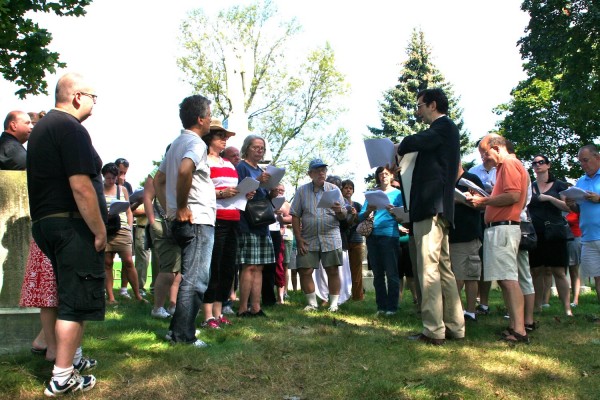
We visited the hills where General Washington likely made his observations of the British Army on the eve of battle, the graves of an American lieutenant who was Alexander Hamilton’s roommate at Kings College and who was captured at Jamaica Pass as the battle developed, and the final resting place of Ebenezer Stevens, who took part in the Boston Tea Party, raised three companies of Rhode Island troops, and fought at Quebec and Ticonderoga. We then rode the attack route of British General James Grant’s attack route down Martense Lane–now Border Avenue in Green-Wood. We drove through Martense Pass and stopped at its intersection with the old Gowanus Road, where the Delaware Monument, dedicated a decade ago to the soldiers who fought across that ground, now stands. Then we visited Sylvan Heights, from which American sharpshooters fired, and Battle Hill, where, according to new scholarship, the Americans’ greatest triumph of the entire Battle of Brooklyn occurred.
Then, in the Meadow near Green-Wood’s main gates, a firing demonstration of muskets and an artillery piece were offered.
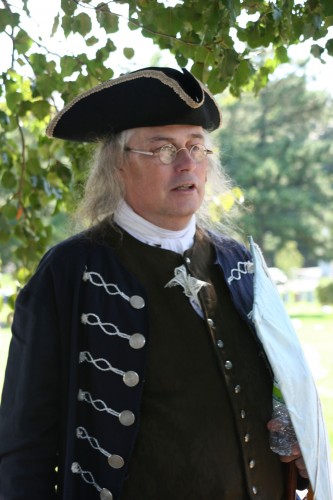
Cooking techniques of the Revolutionary War era were on exhibit. And visitors mingled with the re-enactors, eagerly asking them questions and learning their stories.
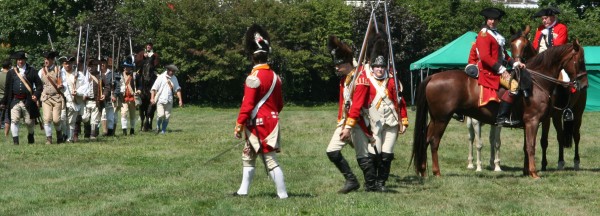
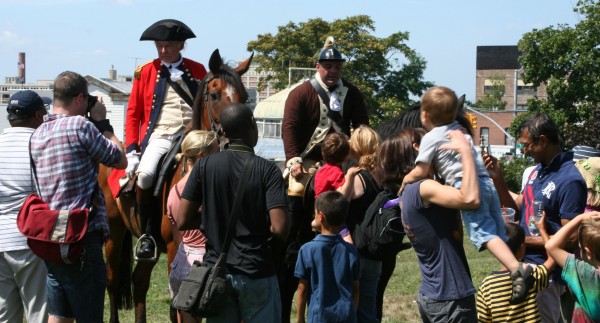
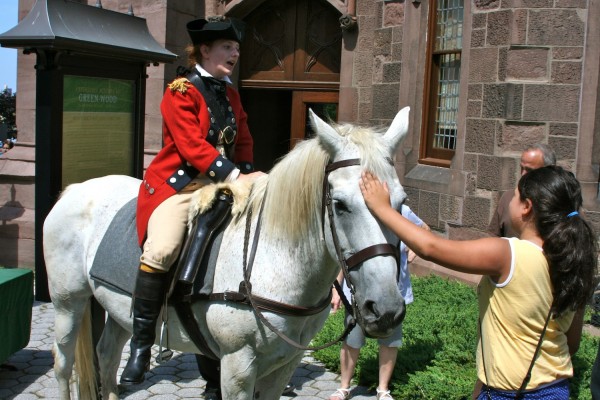
It was then time for the parade, led by the Merchant Marine Band, under the direction of Captain Ken Force.
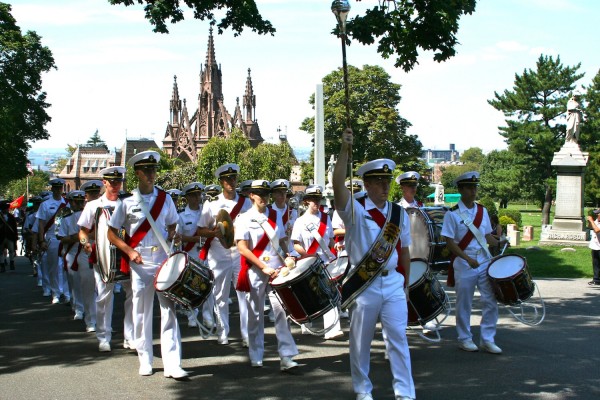
Re-enactors marched, muskets in hand, and then citizens, on cue, took the many reproductions of Revolutionary-era flags on display and carried them up to Battle Hill, where they were placed in holders.
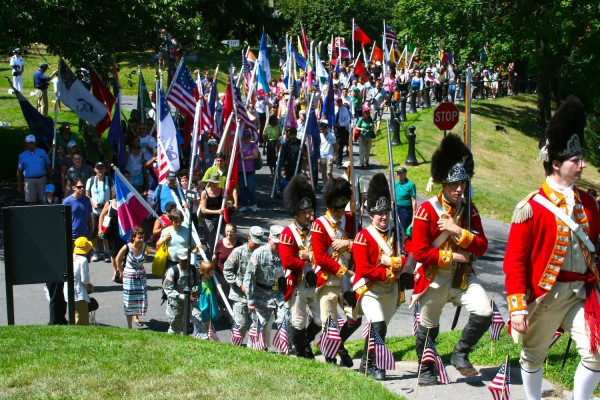
The Declaration of Independence was read, Major General James A. Adkins, Adjutant General of the State of Maryland, spoke about the role played by men of that state in this battle, the fight for Battle Hill was detailed by Green-Wood’s historian (whatever his name is), and singing, salutes, and prayers followed.
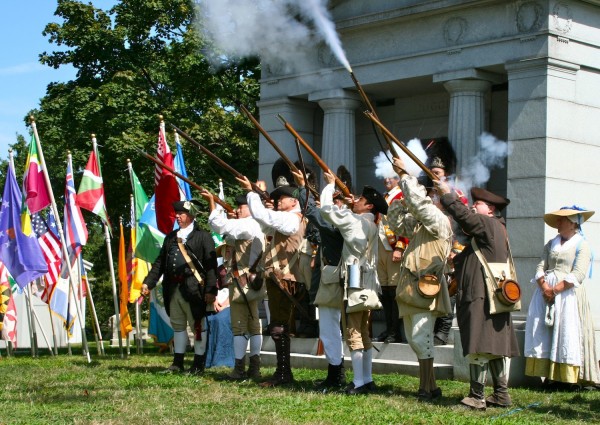
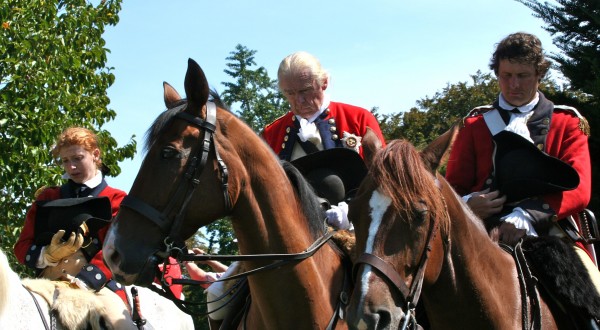
It was a great day! Don’t miss it next year.